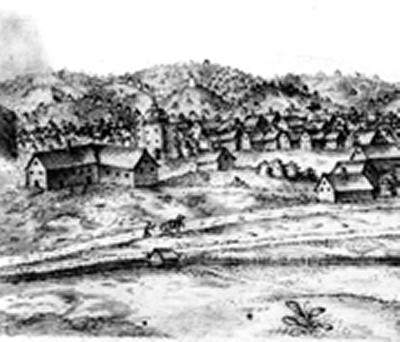Killings and kidnappings: fascinating tales of London’s early theatres highlighted by new online database

A wealth of documentary evidence relating to theatres and society in early-modern London has for the first time been brought together online, in an international project led by the University of Southampton.
Professor of English at Southampton, John McGavin, has directed research to find and transcribe historical texts relating to eight early theatres north of the Thames, which operated outside the capital’s city walls.1 The online database ‘Early Modern London Theatres’ (EMLoT) has been created as part of this research project, in collaboration with King’s College London, and contains many of the transcribed documents.2
“The website allows you to see what direct use has been made in books and other texts over the last four centuries of pre-1642 documents relating to the theatres in Middlesex and Westminster,” says principal investigator, Professor McGavin.
He continues, “This gives a fascinating insight into many aspects of 16th and 17th century theatre life and its place in society. The site is very flexible, allowing the user to pull together documents which are interlinked by common themes or events to help with their investigations. It shows how we got our information about the early theatres, from whom and when.”
Dr Jessica Freeman, of the department of English at the University of Southampton, has spent three years locating and transcribing the early records of the period, while Tanya Hagen and Chris Hicklin from Records of Early English Drama in Toronto (REED) have covered the period from 1642 to the present.
The process of creating the EMLoT site, which was largely funded by a £370,000 grant from the Arts and Humanities Research Council (AHRC), has brought many tales of London theatre life to light. Among these are examples of dangers for performers, such as the kidnapping of child performers and rioting at theatres.
Records show in 1575 that a chorister of St Pauls was ‘stolen’, presumably by a rival group, prompting the Privy Council to call for action against the suspects. In another example in 1631, the King’s Revels company at Salisbury Court demanded the return of its boy actor, who had been put into service by the King’s Men group at Blackfriars Theatre.

The database contains a number of references to violence at the Cockpit or Phoenix Theatre in Drury Lane, during riots by apprentices in London on the 4 March 1617. Several people were killed before apprentices entered the theatre, defaced it, cut up performer’s clothes, and burned books. The following day a letter was sent from the Privy Council to the Lord Mayor asking for an inquiry to be set up to ‘examine and punish’ the offenders.
The EMLoT database was designed and created under the direction of co-investigator John Bradley at the Centre for Computing in Humanities at King’s College London. It includes a Learning Zone devised for senior school pupils and university students, sponsored by the Social Sciences and Humanities Research Council of Canada. Teachers planning lessons can select a particular historical topic and explore the database for documentary evidence. There is also a tutorial on the 1617 riots at the Phoenix Theatre which shows how this event was represented in a succession of documents of different ages using a timeline.
The SSHRC, along with the British Academy, also supported the bibliographic research and editing of documents in Toronto.
There are now plans to extend EMLoT to cover theatres on the South Bank of the Thames, such as the Globe Theatre, which are now considered part of London, but as with the theatres of Middlesex and Westminster, were originally outside the city limits.
The Early Modern London Theatres website can be found at:
www.emlot.kcl.ac.uk (Internet Explorer 7+)
Ends
Notes for editors
The theatres examined in Middlesex and Westminster are: the Red Lion (1567), the Theatre (1576), the Curtain (1577), the Fortune (1600), the Red Bull (1604), the Boar’s Head (1602), the Phoenix or Cockpit (1616) and Salisbury Court (1629).
The database is intended to show how information at the time of the early London theatres was presented in texts in later years. It therefore features primary source documents written before 1642, but only those which were seen and transcribed by authors of documents after this date. As part of the wider research project into the early theatres, primary source pre-1642 texts, which do not appear in later documents, have been located and transcribed for Records of Early English Drama based in Toronto.
Full list of sponsors:
Arts and Humanities Research Council (UK) (AHRC) was the principal sponsor for creating the database as a freely accessible web resource.
For more information, click here
Records of Early English Drama (REED) sponsored all aspects of the project through editorial staff, consultancy, management, and physical and academic resources.
For more information, click here
British Academy sponsored editorial work in Canada to prepare the ‘London Theatres Bibliography’ records for the EMLoT database.
For more information, click here
King’s College London co-sponsored the creation of the database as a freely accessible web resource through its Centre for Computing in the Humanities (CCH).
For more information, click here
Social Sciences and Humanities Research Council of Canada (SSHRC) sponsored the creation of the Learning Zone, and bibliographic research and editing of data in Toronto.
For more information, click here
University of Southampton co-sponsored the creation of the database as a freely accessible web resource through its Faculty of Humanities.
For more information about Humanities, click here